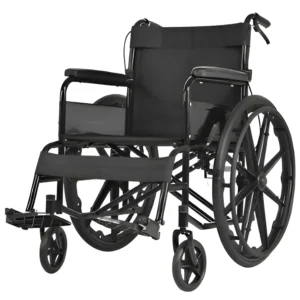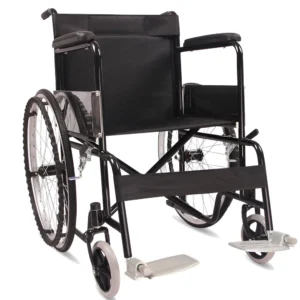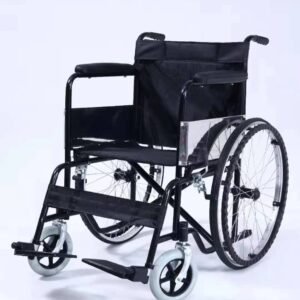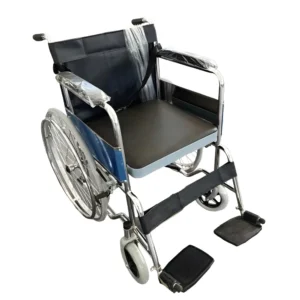Adult Wheelchair: 6 Key Questions Answered—From Types & Sizing to Uses & Buying Guide
For adults with mobility challenges, a well-chosen wheelchair is more than equipment—it’s a gateway to independence, enabling daily tasks, social interactions, and participation in life’s moments. But with so many options, finding the right adult wheelchair can feel overwhelming. Whether you’re a user, caregiver, or healthcare provider, understanding the basics—from types to sizing—ensures the chair fits both physical needs and lifestyle. Here are 6 critical questions answered.
1. What Defines an Adult Wheelchair?
An adult wheelchair is engineered to support the average to larger body frames of adults (typically 5’0”–6’5” in height) and their daily mobility needs. Key traits include:
- Sizing: Seat widths of 16–20 inches (accommodating hips 14–18 inches wide), seat depths of 16–18 inches (supporting adult leg lengths), and backrests tall enough to support the mid-back (16–20 inches).
- Difference from Other Models: Unlike pediatric wheelchairs (smaller seats, lower weight capacity), adult models prioritize comfort for mature bodies. They’re also distinct from bariatric wheelchairs (22+ inch seats, 300+ lbs capacity), which are designed for larger users beyond average adult sizing.
- Focus: Balancing functionality (e.g., maneuvering through home/office spaces) with comfort for extended use (4+ hours daily).
2. Main Types of Adult Wheelchairs (and Their Best Uses)
Adult wheelchairs come in styles tailored to specific needs:
Manual Wheelchairs:
- Standard manual: Sturdy, affordable ( $300–$800 ), ideal for short-term use (e.g., post-surgery) or users with caregiver support.
- Lightweight manual: 25–35 lbs, foldable, great for active adults who self-propel (e.g., shopping, doctor visits).
- Reclining manual: Adjusts to 160° angles, perfect for long-term users needing pressure relief (e.g., spinal cord injury patients).
Powered Wheelchairs:
- Indoor powered: Compact, tight turning radius, for home/office use (best for users with limited upper-body strength).
- Outdoor powered: Large tires, longer battery life (10+ miles), suited for parks, sidewalks, or travel.
Specialty Adult Wheelchairs:
- Tilt-in-space: Tilts the seat and backrest together, reducing pressure without repositioning the user.
- Sports-focused: Low-profile frames, durable wheels, designed for wheelchair basketball, tennis, or hiking.
3. How to Choose the Right Size for an Adult User?
Ill-fitting wheelchairs cause discomfort, pressure sores, or poor posture. Follow these steps:
- Seat Width: Measure the user’s hips at their widest point, then add 2 inches. A 16-inch seat fits slimmer adults; 18 inches suits most; 20 inches works for broader builds.
- Seat Depth: Measure from the back of the knee to the hip. Subtract 2 inches to avoid pressure on the backs of the knees. Most adults need 16–18 inches.
- Seat Height: Should align with the user’s natural sitting position—feet flat on the floor, knees bent at 90°. This is typically 19–21 inches from the floor (matches standard chair heights for easy transfers).
- Backrest Height: For daily use, 16–18 inches (supports lower to mid-back). Add 2–4 inches for users needing upper-back support (e.g., those with posture issues).
4. Who Needs an Adult Wheelchair?
It’s a versatile tool for diverse mobility challenges:
- Short-Term Users: Adults recovering from injuries (e.g., broken legs), surgeries (e.g., knee replacement), or illnesses (e.g., pneumonia) who need temporary support.
- Long-Term Users: Individuals with chronic conditions (e.g., multiple sclerosis, Parkinson’s, stroke) requiring ongoing mobility aid.
- Users with Specific Needs: Those with limited strength (powered models), pressure sore risks (reclining/tilt features), or active lifestyles (lightweight/sports models).
5. Key Features to Prioritize
- Comfort: Padded seats (memory foam or gel), breathable upholstery (mesh for summer), and adjustable footrests/armrests (accommodate different heights).
- Durability: Steel frames (sturdy for heavy use) or aluminum (rust-resistant, lighter for travel). Reinforced joints at the seat and wheels prevent wobbling.
- Maneuverability: Narrow frames (24–28 inches wide) fit through doorways; 8–12 inch rear wheels (manual) or responsive joysticks (powered) ease navigation.
- Safety: Wheel locks that engage firmly (prevents rolling on slopes), anti-tip bars (for users who lean forward), and secure seat belts (for those with limited stability).
6. Maintenance for Long-Term Reliability
- Weekly Checks: Tighten loose screws (footrests, armrests), ensure brakes lock, and inspect tires for wear.
- Monthly Cleaning: Wipe frames with mild soap to prevent rust; vacuum upholstery to remove debris. For powered models, clean battery contacts to avoid corrosion.
- Battery Care (Powered Models): Charge after use, avoid full depletion, and replace every 2–3 years.
- Professional Servicing: Annual tune-ups (e.g., adjusting wheel alignment, lubricating hinges) extend lifespan by 2–3 years.
Conclusion
An adult wheelchair is a partner in independence, designed to fit the user’s body and life. By understanding types, sizing, and features, you can choose a model that supports daily activities—from cooking at home to exploring the community—with comfort and confidence.
Thank you for reading this, dear, if you have any suggestions about our website or want to know about wheelchair, please contact us. We will respond quickly.



